Natural History
Bryozoans are often known as 'Moss Animals" (although they look nothing like the moss that is most likely invading your lawn, unless you live near Asarco).
They live in colonies called Zooids which is simply a bunch of interconnected individuals. A single Bryozoan rarely ever reaches 1 meter in
size. Zooids, on the other hand, have a wide range in size from 1mm to meters (and don't worry, they won't eat you)! You will most commonly find Bryozoans on firm
surfaces such as shells, ships, piers, pilings, docks and often (and common) algae. There are three main groupings of Bryozoans including:
Phylactolaemata (Mainly freshwater, with no calcium)
Stenolaemata (Tubular, with calcium walls)
Gymnolaemata ( Marine, cylindrical, flattened, mostly what we found this quarter)
There are about 5,000 species that are alive today. They generally are able to move through hydrostatic pressure, but tend to be very sessile. Their digestive tract is "U" shaped and very
simple. There are many different forms bryozoans can appear as (don't worry, no clowns), and unfortunately because of this, are very easily confused as other marine invertebrates.
Some examples of their
different forms are found as thin crusts, bushy, branched, calcareous, and coral like.
Please enjoy the pictures below (scroll over pictures to see where they were found)!
Please visit the Marine Ecology class homepage to see the rest of our animals!
Bryozoans seen in class:

Unknown encrusting bryozoan
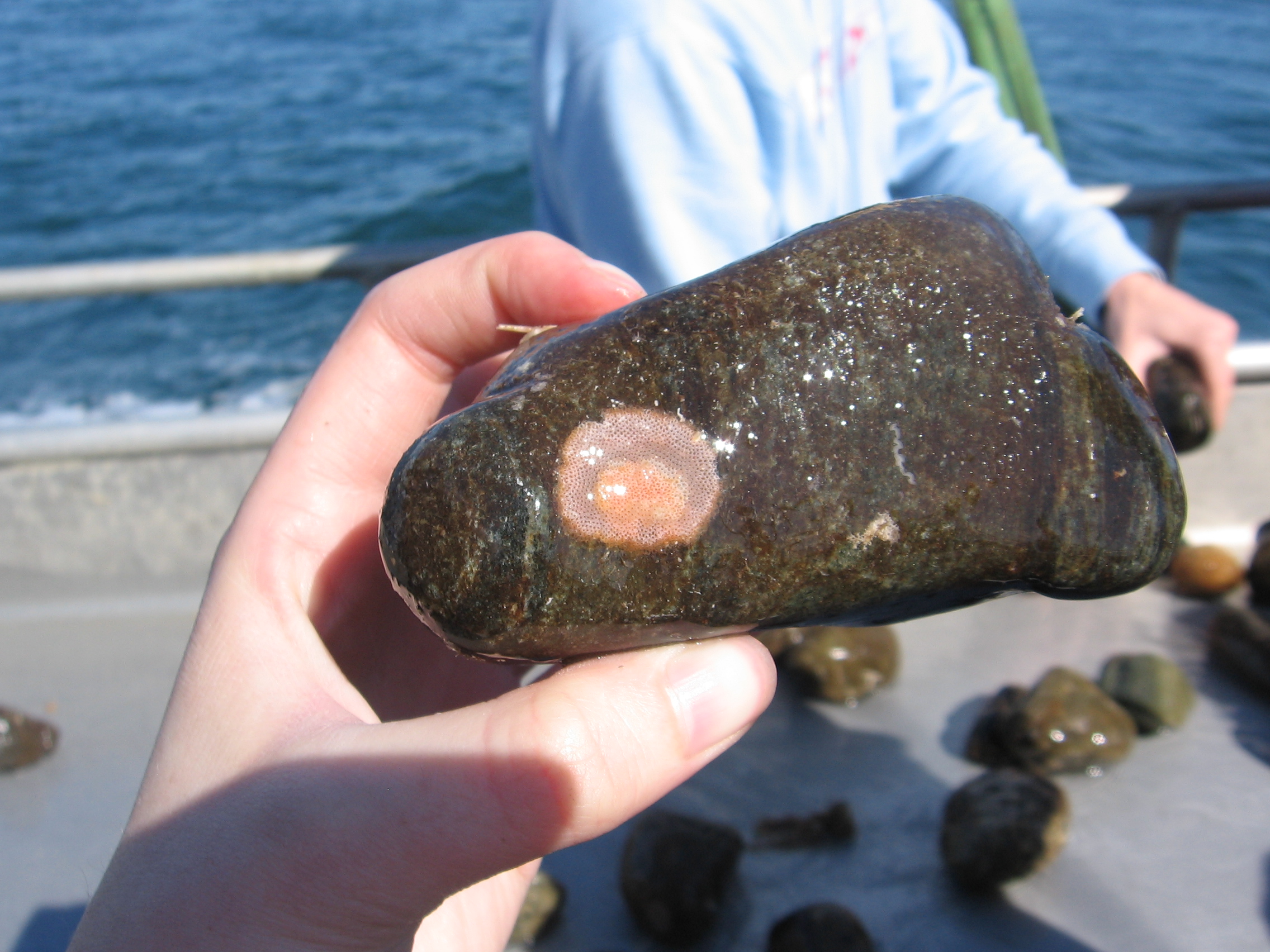
Unknown encrusting bryozoan
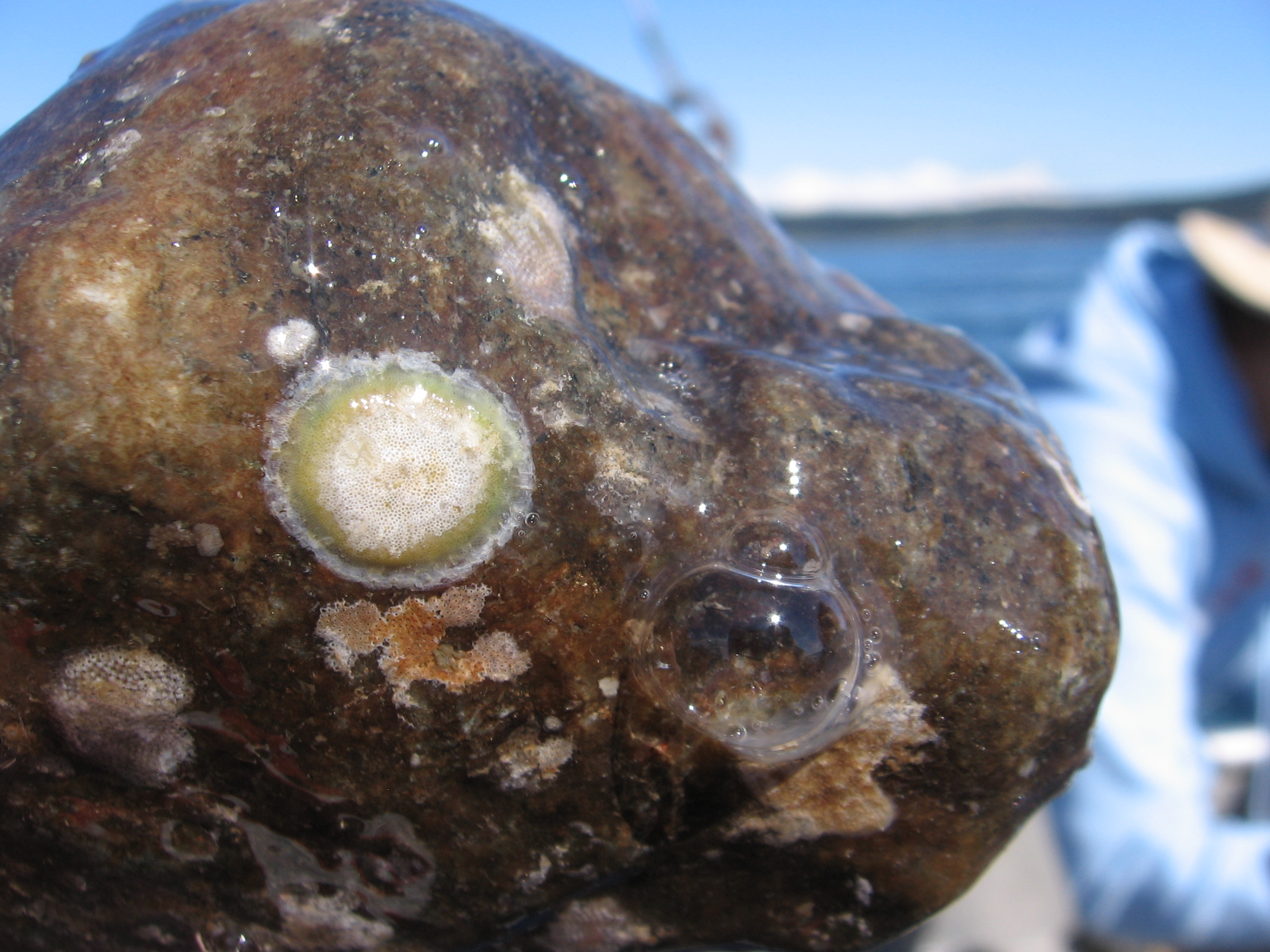
Unknown encrusting bryozoan
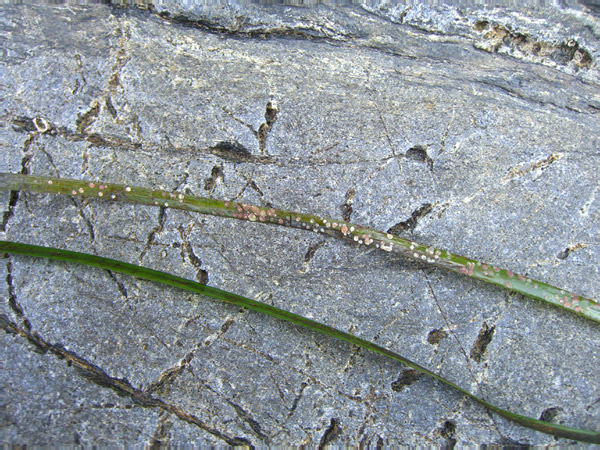
Membranipora membranacea - Kelp Encrusting Bryozoan
Bryozoans not seen in class, but still worth mentioning!:
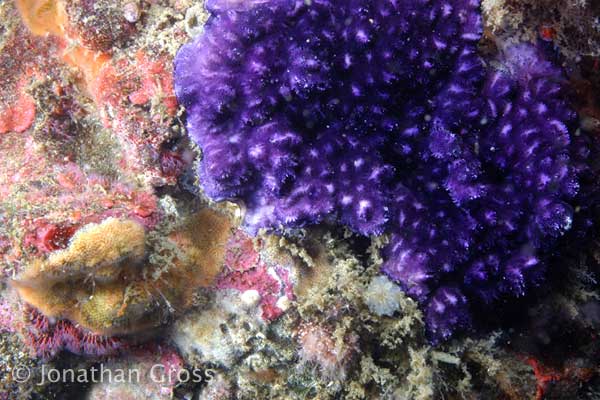
Disporella separata - Purple Encrusting Bryozoan (taken from: www.seaotter.com)

Eurystomella bilabiata - Derby Hat Bryozoan (taken from: calphotos.berkeley.edu/)
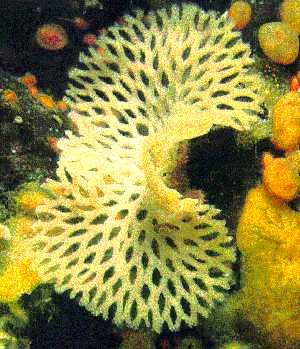
Phidolopora pacifica - Lattice-Work Bryozoan (taken from: www3.telus.net)
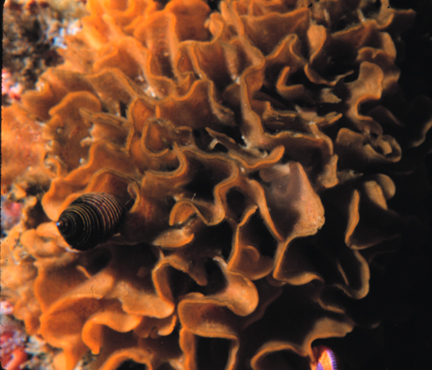
Hippodiplosia insculpta - Fluted Bryozoan (taken from: http://bio.classes.ucsc.edu/bio161/)




